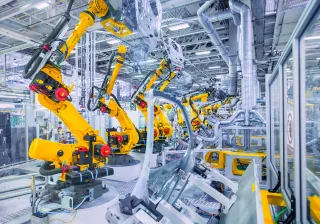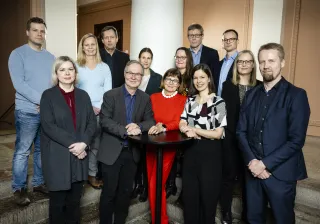The world we live in is in change, providing rapidly changing requirements for companies across industries and geographies.
Considering the triple planetary crisis (climate change, pollution and biodiversity loss), companies are facing the almost perfect storm as:
- Customers in B2B and B2C are starting to take sustainability criteria into consideration in their purchasing decisions, forcing companies to fundamentally rethink their product and service offering.
- Employees are “voting with their feet”, selecting employers that have a clear Purpose and consider sustainability along the social, ecological and economic aspects as key of their doing.
- Regulators are driving new legislation to enhance sustainable business operations and a sustainable society creating new regulatory landscapes companies need to consider and comply with.
- Investors are starting to consider ESG criteria as key aspects of their investment portfolio to mitigate risks and address market potential.
As such, there is a need for companies to address the elephant in the room, meaning to consider how they can address the changing operating environment while maintaining a profitable, health business. Luckily, the shift towards a sustainable world does not only provide downsides for companies but can provide a wide range of opportunities for differentiation, cost reduction and revenue uplift.
Focus on doing more good
While in many companies the focus of sustainability activities is to reduce negative impacts of own operations, e.g. CO2 emissions and energy efficiency, there is a good chance for companies that consider sustainability as a market opportunity to address new market potentials. To do so, organizations need to shift their mindset from “doing less bad” to “doing more good”.
In this context, companies need to keep their eye on the ball in two directions: their own operations and the broader ecosystem:
- Optimizing own operations to minimize negative impact and to enable positive impacts often requires companies to re-think their operations and to expand their view beyond the own company boundaries to for example identify new ways of optimizing their operations for sustainability. Datacenter utilizing excess heat for district heating, production companies utilizing material side-streams as feedstock.
- Providing customers and broader society with products and services that enable stakeholders along the value chain to minimize their negative impacts and maximize positive impacts requires companies to re-think their product and offering portfolio as enablers for sustainability.
The Handprint model
In the context of these new requirements and developments in the operating environment, the handprint methodology was developed to help companies understand and showcase how their products and services provide a positive impact for their customers and society at larger based on a scientific approach.
The handprint methodology developed by VTT and LUT University is an LCA-based metric that describes the potential positive environmental impacts of a customer’s (or customers’) activities achieved by replacing a baseline solution with a handprint solution.
The handprint calculation follows four stages that are divided into multiple steps
- Stage 1: Identification of the operating environment
Step 1: Identify customers of the product
Step 2: Identify potential carbon handprint contributors
Step 3: Define the baseline - Stage 2: Defining LCA requirements
Step 4: Define the functional unit
Step 5: Define the system boundaries
Step 6: Define data needs and sources - Stage 3: Quantification of the handprint
Step 7: Calculate the footprints
Step 8: Calculate the handprint - Stage 4: Communication
Step 9: Critical review of the carbon handprint
Step 10: Communicate the results
A more detailed description of the steps can be found on the Handprint-webpage or in the Carbon Handprint Guide.
How to get started?
The environmental and carbon handprint methodology developed in close cooperation between VTT, LUT University and companies can be used by organizations to quantify the positive impacts that their customers can achieve by using products or services an organization is offering.
While the methodology is free for everyone to use, we understand that the approach and the calculations are not always easy to understand and to perform, which is why we are here to help. We have worked with multiple companies in applying the handprint methodology for products and services, along the way building the organizations own capability to utilize and apply the handprint methodology in their organizations.
Interested, we’re happy to discuss how the handprint methodology could help your organization in shifting from a doing less bad to a doing more good mindset.









